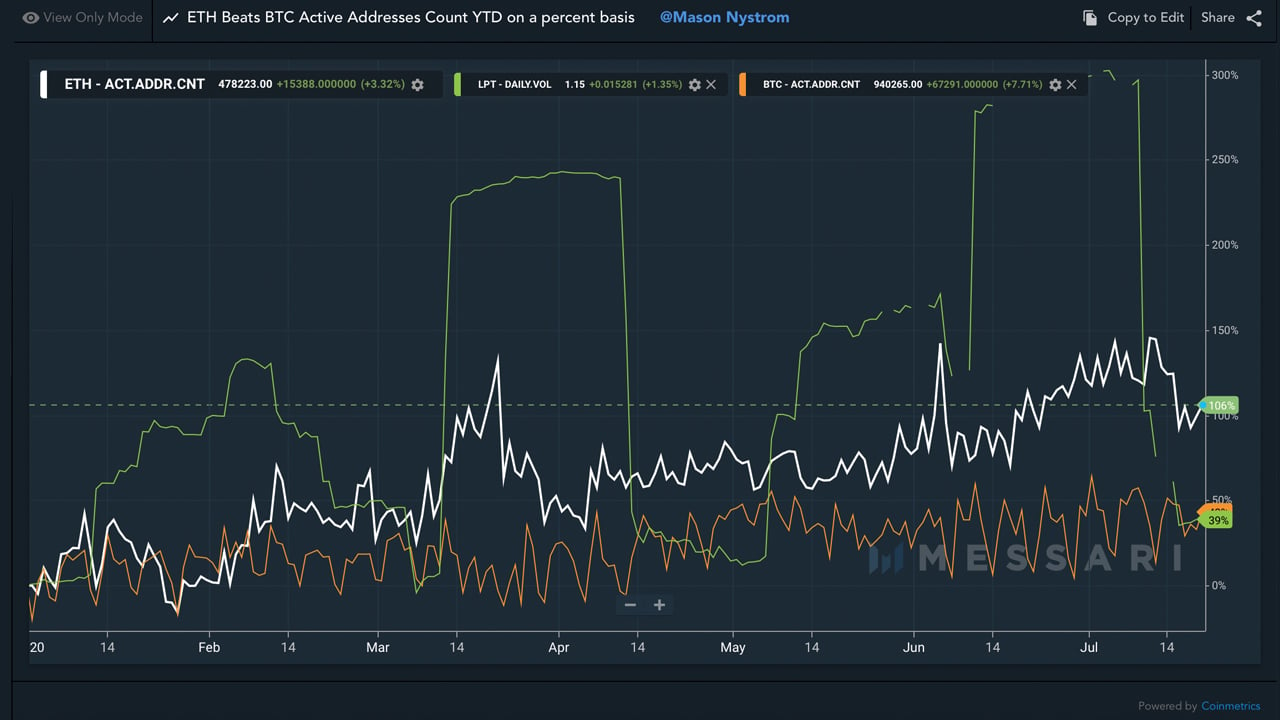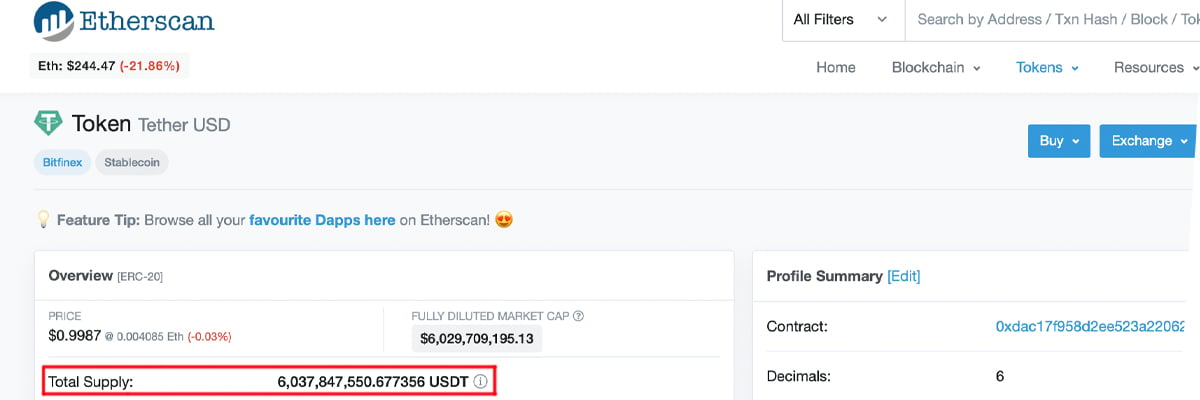
The number of active Ethereum addresses has grown aggressively in 2020 because of the decentralized finance (defi) boom. Active Ethereum addresses doubled in size leaving networks like Tron, Cardano, and EOS in the dust.
There’s a lot happening in the world of decentralized finance (defi) with things like synthetic bitcoin (WBTC), stablecoins, yield farming, decentralized exchange (dex) platforms, and more crafted on the Ethereum network. Since the end of 2019, data from Coin Metrics and Messari.io indicates that Ethereum addresses doubled in size throughout the year.
Active ETH addresses have superseded BTC active addresses by a long shot and this has been sparked by 2020’s defi bonanza. Additionally, decentralized exchange (dex) trade volumes have touched $1.6 billion this month and there were $160 million in dex swaps during the last 24 hours. The top three platforms today as far as the most exchange volume today include Curve, Balancer, and Dydx according to Dune Analytics.

Data also shows the number of ETH-based smart contract platform active addresses has outpaced other Ethereum competitors. Coins like TRX, EOS, ADA, and XTZ have been eclipsed. However, Messari researcher Wilson Withiam tweeted about the defi situation and Ethereum’s smart contract war competitors.
“In the last year, thirteen Ethereum competitors have raked in over $300 million combined,” Withiam said. “Almost all were valued well north of $100 million.”

Ethereum is also seeing a significant amount of stablecoin use between all the ERC20-based stablecoins buzzing around the network. One of the biggest ETH-based smart contracts is the most popular stablecoin in the world, tether (USDT). According to Etherscan stats, there’s a whopping 6,037,847,550 USDTs in circulation using the ERC20 standard.

Moreover, the great number of other stablecoin projects in existence like Dai (DAI), Usd coin (USDC), Trueusd (TUSD), and Pax standard (PAX) are all ERC20 tokens. Ethereum is also doing some heavy lifting for the BTC chain and acting as a fluid sidechain. There is $114 million total-value-locked (TVL) in the ERC20 token called WBTC that is backed 1:1 by bitcoin (BTC). Other chains like renBTC and sBTC are moving synthetic BTC on the Ethereum chain as well.
All of this action taking place in the Ethereum ecosystem has developed a large number of active Ethereum addresses but there have been a number of issues. The fees needed to interact with an ERC20 smart contract has been high and cryptocurrency proponents have been complaining about the issue regularly.
For instance, it cost over $4 and 100 MANA to register a name (interact with a smart contract using Metamask) on Decentraland on July 21, 2020. Fees have been a significant nuisance to Ethereum users yield farming and interacting with defi as some gas fees have reached 100 gwei.
Ethereum’s cofounder Vitalik Buterin said on Tuesday that the transaction fee revenue could possibly undermine the chain’s security.
“Transaction fee revenue is now nearing half as high as block reward revenue,” Buterin tweeted. “This actually risks making ethereum *less* secure because of fee market reform (ie. EIP 1559) fixes this; another reason why that EIP is important.”

Additionally, the management team behind Maker and the Compound project community have been at odds lately as gainful DAI yield on Compound has created stability issues for the stablecoin DAI. The discussion has been very topical for individuals like Cyrus Younessi, the Head of Risk at the Maker project.
Another controversial discussion in regard to stablecoin use on the Ethereum chain is the fact that a number of stablecoin addresses from USDT and USDC have been frozen. A number of skeptics believe that the ability to blacklist a token via an Ethereum smart contract threatens defi and puts the term “decentralized finance” into question.
What do you think about Ethereum’s active addresses doubling in 2020? Let us know what you think about this subject in the comments section below.
The post Ethereum’s 2020 Defi Boom Doubles Active Ether Addresses, But Fees Skyrocket appeared first on Bitcoin News.

Bitcoin.com is author of this content, TheBitcoinNews.com is is not responsible for the content of external sites.
Our Social Networks: Facebook Instagram Pinterest Reddit Telegram Twitter Youtube










